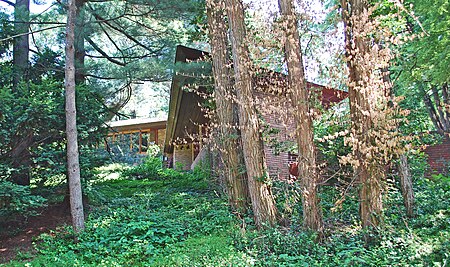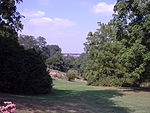William Palmer Residence
Frank Lloyd Wright buildingsHouses in Ann Arbor, MichiganHouses in Washtenaw County, Michigan

The William and Mary Palmer House is a house in Ann Arbor, Michigan, designed by Frank Lloyd Wright in 1952. The home was designed for William Palmer, an economics professor at the University of Michigan, and his wife Mary. It sits on three lots at the end of a quiet, dirt road cul-de-sac. The location is near the Nichols Arboretum, and less than a mile (1.2 km) from the university.
Excerpt from the Wikipedia article William Palmer Residence (License: CC BY-SA 3.0, Authors, Images).William Palmer Residence
Orchard Hills Drive, Ann Arbor
Geographical coordinates (GPS) Address Website External links Nearby Places Show on map
Geographical coordinates (GPS)
| Latitude | Longitude |
|---|---|
| N 42.278588888889 ° | E -83.715788888889 ° |
Address
Palmer House
Orchard Hills Drive 227
48109 Ann Arbor
Michigan, United States
Open on Google Maps










